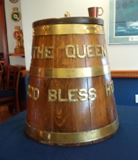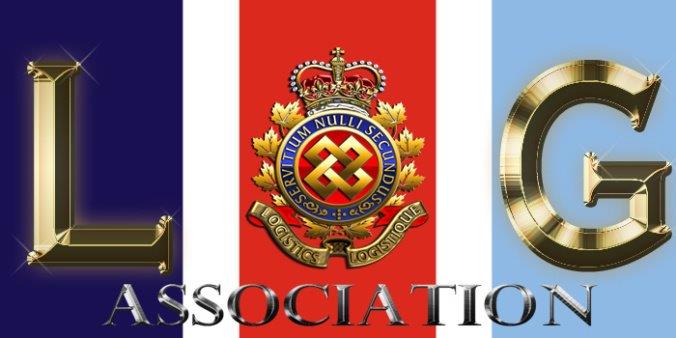The Rum Ceremony (The Tot)

From its earliest days the Royal Navy issued beer, wine and spirits in place of tea, coffee and cocoa and even water on its ships. Starting in 1745, beer and spirits were issued for each watch, on alternative days, and in 1831 all issues except rum were ceased. By 1824 the issue had been reduced from half a pint to two and a half ounces (a “Tot”) of neat rum, and in 1850 the issue was reduced from every watch to once a day at noon.
The formation of the Royal Canadian Navy in 1910 saw many of the Royal Navy traditions carried over, and the daily issue of a tot was perpetuated, and continued until 1972. At six bells the Bos’n would pipe “Up Spirits” and the OOD (Officer of the day), the Supply P.O., the Master at Arms (Jaunty), and the butcher (usually a large sized Marine, or “Boot Top”) would assemble at the door of the spirit room. The Jaunty would then unlock two heavy padlocks and the party would file into the dimly lighted room where the butcher would tap a cask, insert a siphon pump and draw off the day’s ration for the ship’s company. Neat tot’s would be issued for the Chiefs and PO’s, and the remainder transferred to a small cask or breaker which would be padlocked and carried to a prominent location with a large oaken rum tub with shining brass hoops and the inscription “The King (or Queen) – God Bless Him/Her”. The Breaker would be left there in the care of the sentry and, after “Rum Call” was played on a bugle, the breaker would be unlocked and the rum emptied lovingly and gently into the oaken tub. The PO would carefully consult his ledger and call out the number of tots to which each mess is entitled, the messes would be served, and any residue poured down the scuppers while the OOD looks on dolefully (In smaller Canadian Navy ships during WWII this ceremony was much less formal, usually issued by the Cox’n and supervised by the OOD). The part of the ceremony in which the Cox’n disposed of any surplus – invariably about a quart – was a class act. The Cox’ns were past masters at making about three drops of Grog look like half a gallon, and made a grossly exaggerated performance of sloshing the residue into the scuppers as the supervising Officer looked the other way (He might later be invited for a tot in the Chiefs and P.O.’s mess where the entire spilled surplus, would mysteriously find its way).
The daily rum tot was an important part of social life on the lower deck, but it also had utilitarian uses, with the rum becoming a medium of barter or a way of paying favour or paying off a bet – standing a watch, doing a shipmates dhobi (laundry), or loaning tailor-made trousers or a jumper instead of pusser’s issue for a run ashore. There were standard currencies to the tot for such occasions, with a “Sipper” (a small sip) being the smallest. A “Gulper” was one (but only one) big swallow; and a “Sandy Bottom” drained what was left of a tot offered by a shipmate. 3 Sippers equalled a Gulper, and 3 Gulpers a tot.
A further utilitarian use for Pusser’s rum was related to its alleged use as a substitute embalming fluid. Supposedly the great naval hero Nelson had expressed a wish that, if he was killed in action or died away from his beloved England, his body was to be conveyed home preserved in a cask of rum. His wishes were honoured after his death at Trafalgar, and both the cask and Nelson’s body arrived intact, but that the rum had disappeared, the cask purportedly having been tapped and the rum drunk by the men of HMS Victory.
The signal hoist for “Splice the Main Brace” is BRAVO-XRAY. The Main Brace was the largest and heaviest of all the running rigging of sailing vessels, and its splicing, particularly when a ship was underway in heavy weather, was one of the most arduous tasks onboard, a task whose completion merited the issue of a double ration of rum. Since 1773, this signal has also been ordered to mark a royal birth, a visit to a ship by a Monarch, a victory, or (in days of yore) before a battle. The last time this particular call was heard was at 6 bells in the forenoon watch of March 31, 1972 when the RCN brought an end to a tradition that had endured over 300 years in British and Canadian ships.
Hal Pottle for the Royal Canadian Logistics Service Association
0 Likes
